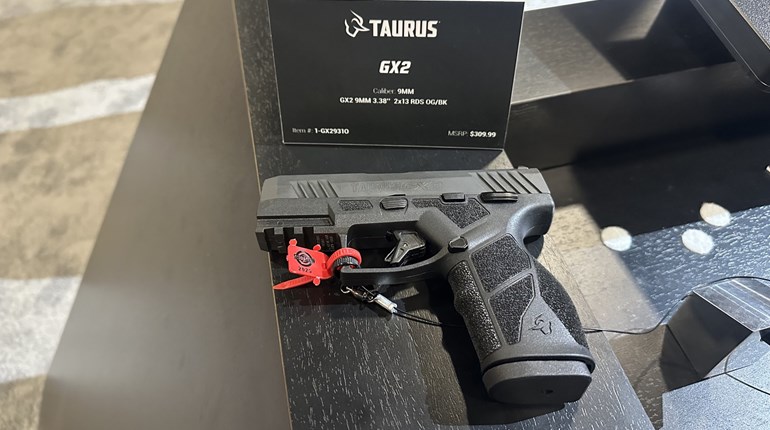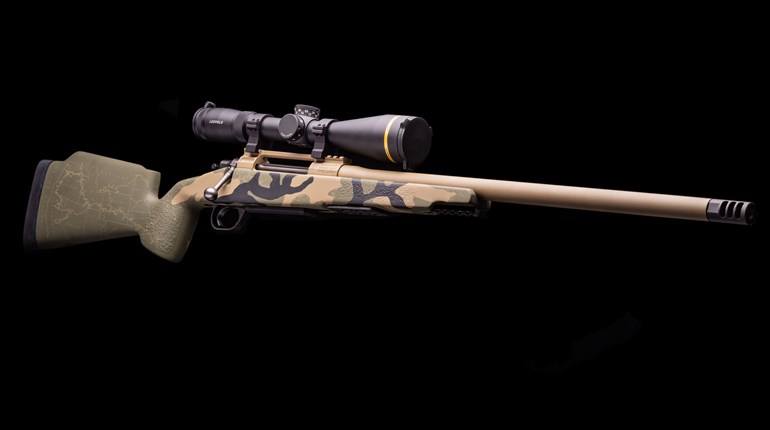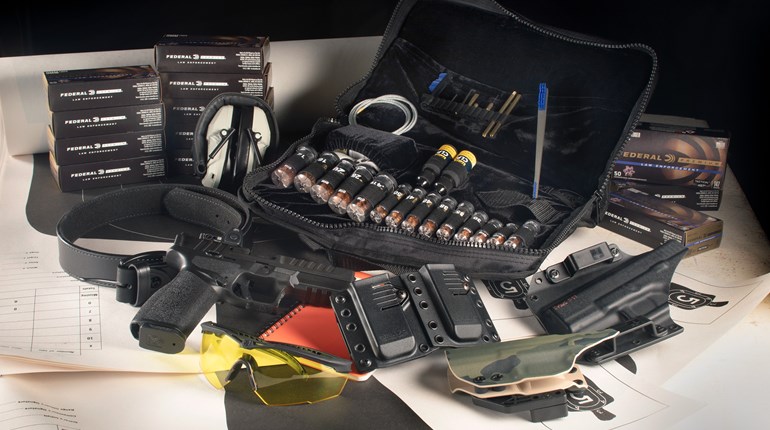
My wife is an accomplished athlete. She played point guard on her college basketball team and set the school record for the most three-point shots during her collegiate career. She’s quick to learn any new sport and generally excels very quickly. That is, with one exception—shooting.
Despite being an outdoorswoman my wife had never fired a gun before we met. I assumed that since she was so adept at virtually every other athletic endeavor she’d be a natural shooter, but I was wrong. In fact, when she started trying to shoot she was kind of…terrible. I felt like I’d been a little premature in buying her a shotgun so we could shoot clay targets together, but her level of frustration was so high that I was pretty sure that the new over/under (a nice one, too) might be headed to the bottom of a lake. I tried my best to coach her through her misses.
“Keep both eyes open and bring the bead up to the target,” I said.
“But I see two beads!”
“That makes no sense,” I said. “Just focus on the target.”
Miss.
“Did you focus on the target?”
Dirty glance.
Miss.
Miss.
Things were getting out of control. Externally I was calm, trying to coach her through the misses with the anticipation of a breakthrough at any minute. Internally I was wondering how she could possibly be this terrible at shooting and was trying to remember where I’d put the receipt of payment so I could return that shotgun.
Then it dawned on me. At some point during some shooting class I’d attended there was a discussion about something known as cross-dominance. What I remembered about cross dominance is that it affected shooters whose dominant eye differed from their dominant hand, and since I didn’t have that dilemma I didn’t pay careful attention to the discussion.
I had a plan. I asked my wife to perform a very simple test. She pointed at an object in the distance (the base of a dead tree, if memory serves) with one finger, held the finger in position, then closed both eyes one at a time. When she closed her left eye the object and its relative position to her finger stayed the same. When she closed her right eye, however, the relative position of her finger moved and she was no longer pointing at the tree. Her struggles were a result of the fact that she was a right-handed, left eye-dominant shooter. In other words, she was cross dominant.
“Before I realized I was cross-dominant shooting was frustrating,” says my wife Bethany. “You were telling me one thing and I was seeing something totally different. Once I realized what the problem was shooting became much more enjoyable and much easier.”
She would probably also like to add that she’s now capable of breaking as many clays on a target course as her husband. At the very least our trips to the shooting range have become much, much more enjoyable.
How Eye Dominance Works
Humans have binocular vision and special neurons in the brain’s visual cortex are tasked with giving preference to the dominant eye when looking at an object like a gun sight. If this didn’t occur we would constantly see the same object from two different angles. These neurons work so seamlessly that most people never even know the brain is giving preference to just one eye—until they try to perform a task like shooting a clay target. According to most studies women are far more prone to cross-dominance than men. Very few people fall into the category of “mixed ocular dominance,” a situation in which neither eye shows a strong dominant tendency.
Testing for Eye Dominance
There are several ways to quickly test for eye dominance. You can, as described above, find a distant objects and raise a finger or thumb to point directly at that object. Close one eye and then the other. In most cases your finger will remain pointed at the object when your dominant eye is left open. When your non-dominant eye is open, your finger position will appear to move away from the object.
The other option is to overlap your hands so that the space between your thumbs and fingers creates a triangle around a distant object like a clock that’s mounted on the other side of the room. The object should stay in the middle of the triangle you’ve created with your hands when the dominant eye is open. When the non-dominant eye is open the object will be out of sight. In some instances the object will not be centered with either eye—an indication of mixed dominance.
What You Can Do About It
There are a couple solutions to dealing with cross-dominance as a shooter. First, you can close your dominant eye when you shoot. This isn’t ideal, though, since you’ll have to remember to close that eye every time you shoot and you’ll limit your peripheral vision and situational awareness, which isn’t ideal.
Another option is to block the dominant eye by wearing glasses and covering (with tape or some other object) the lens of the dominant eye. This allows you to keep both eyes open but it requires you to shoot with glasses in place every time (which is not a problem in most target-shooting situations, but can be limiting in self-defense scenarios).
Lastly, you can learn to shoot with your weak hand. This may seem extreme, but there are a number of shooters who have trained themselves to shoot with their weak-side hand quite effectively. Which of these three options you choose is up to you, and your level of eye dominance will also impact which method works best for you. My wife opts to shoot left-handed, and she has become quite good. And once she started breaking one clay target after another she was no longer frustrated—and no longer ready to give up shooting altogether.







































